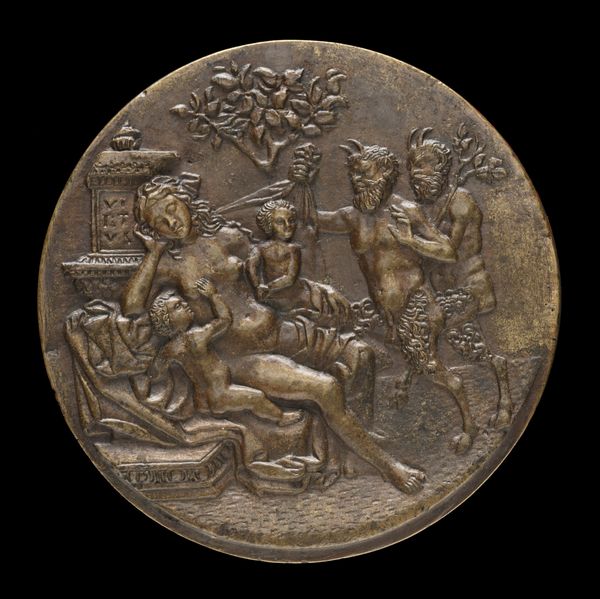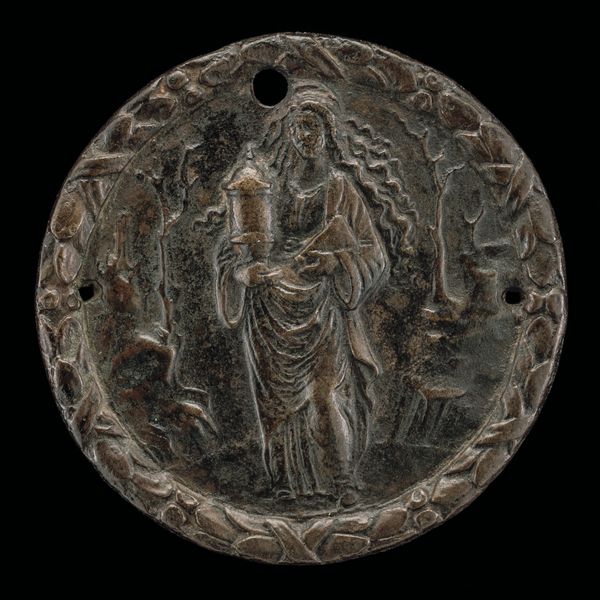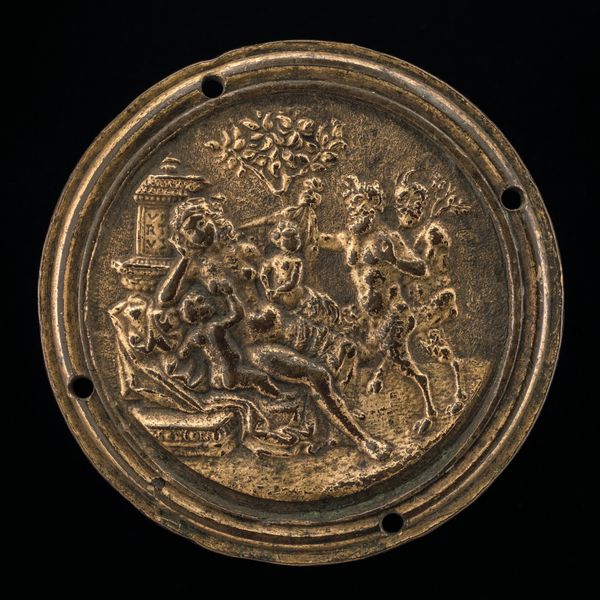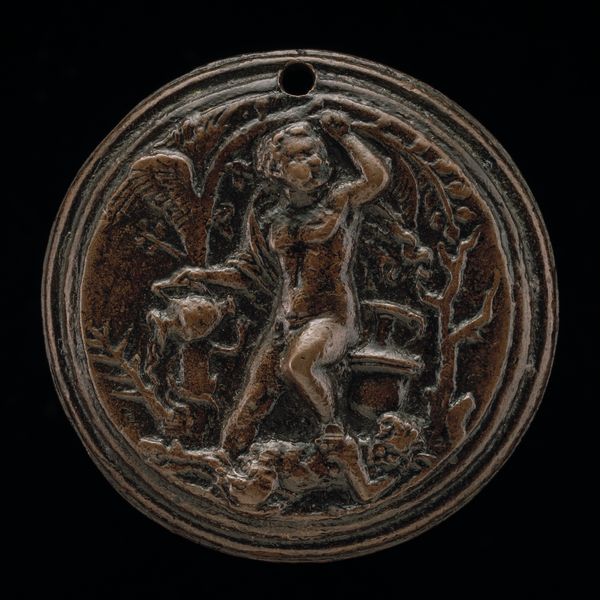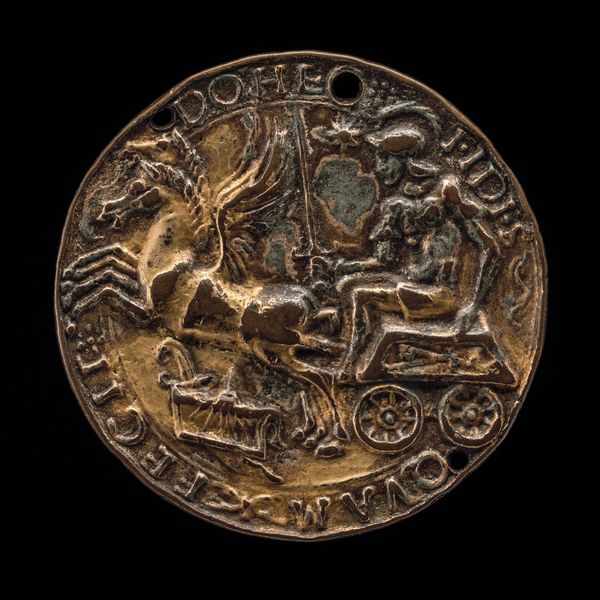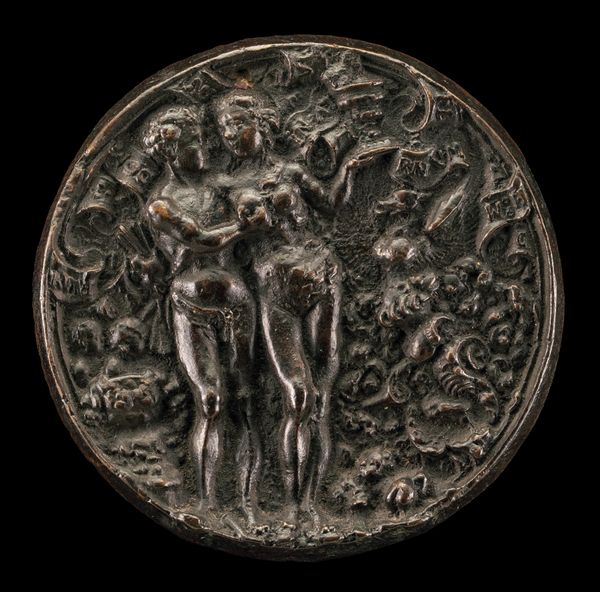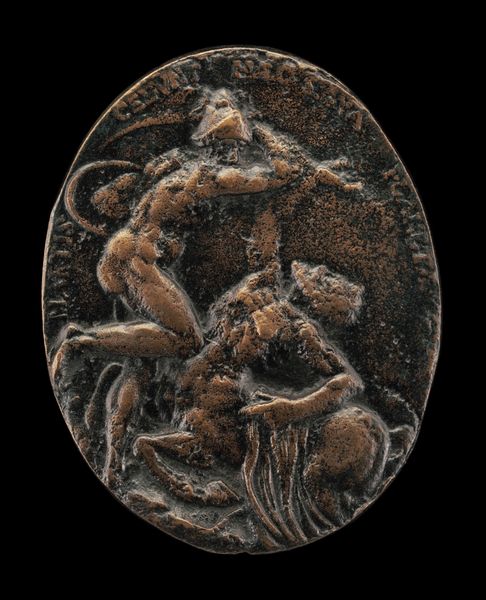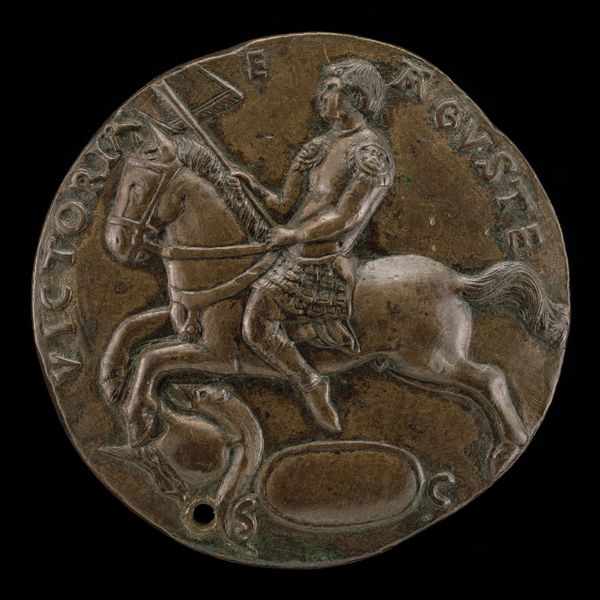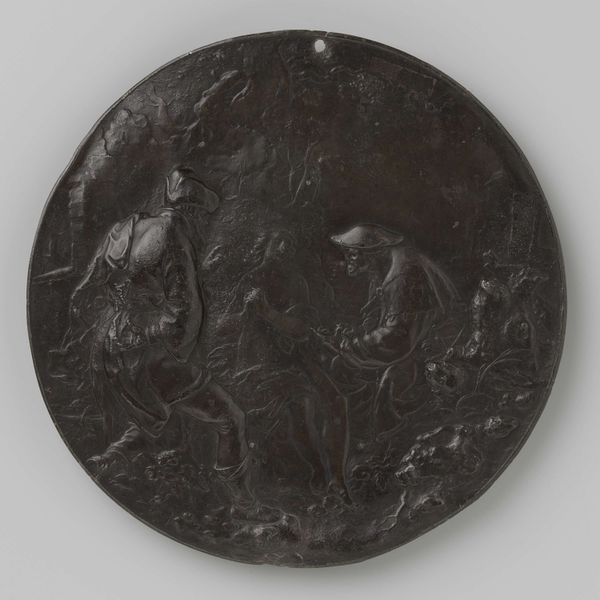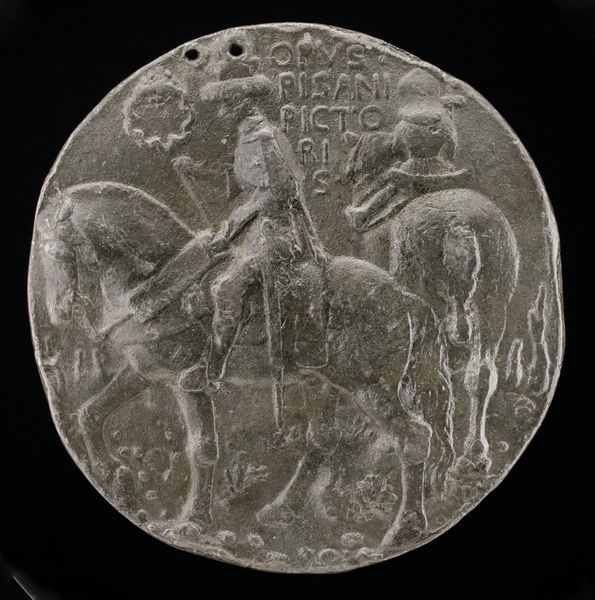
relief, bronze, sculpture
#
narrative-art
#
sculpture
#
relief
#
classical-realism
#
bronze
#
figuration
#
11_renaissance
#
sculpture
#
genre-painting
#
erotic-art
Dimensions: overall (diameter): 5.06 cm (2 in.) gross weight: 47.3 gr (0.104 lb.)
Copyright: National Gallery of Art: CC0 1.0
Curator: What strikes me first about this bronze relief, entitled *Nymph Carried Off by a Horseman*, is the sheer dynamism captured in such a small space. There’s an undeniable energy radiating from the scene. Editor: I see what you mean. It’s unsettling, though. There’s a classical aesthetic—a romantic vision almost—juxtaposed with the violence of the abduction. The iconography is… problematic, viewed through today's lens. Curator: The artist, known as Master M.C., was active during the Renaissance, and clearly drew inspiration from classical mythology and the visual language of the era. The composition itself, with the spiraling movement of the horse and figures, pulls the viewer's eye around and around. It evokes that intense emotion you describe. It makes you wonder what was happening historically, and why these visual elements were prominent in Renaissance sculpture. Editor: Precisely! Consider the art market in the Renaissance—patrons sought dramatic, often morally ambiguous subjects. Representations of power dynamics, of conquering and possessing, resonated with those wealthy elite commissioning these artworks. Were these celebrations of triumph, or warnings against unchecked power? Curator: I lean towards seeing it as a reflection of prevailing beliefs about the relationship between men and women, perhaps even of a more universal dynamic between power and vulnerability. Nymphs, in their association with nature and sensuality, become potent symbols of beauty and earthly temptation that both inspire and corrupt masculine influence. How does this all land on viewers today, do you suppose? Editor: I’d argue that this relief compels us to confront our past, our cultural memory—to really investigate these ingrained ideas about gender and power, as you pointed out. By grappling with the original context, and the imagery itself, we come to our own modern judgment, no? We don't merely observe; we are compelled to examine our place within the grand, complex narrative of art history. Curator: I agree. There’s a conversation unfolding—between the artist, the patrons of the Renaissance, and ourselves— across centuries. That exchange can only enrich and perhaps reframe our present thinking, no? Editor: Absolutely. An artifact can reflect a set of established views or become a portal for transformative critical evaluation.
Comments
No comments
Be the first to comment and join the conversation on the ultimate creative platform.
